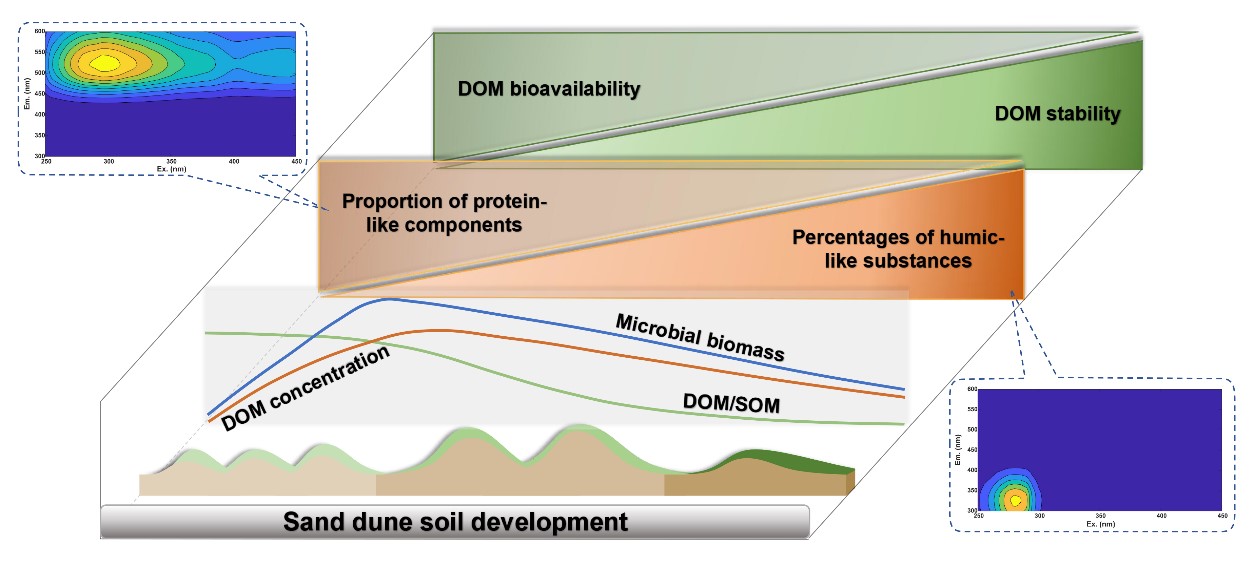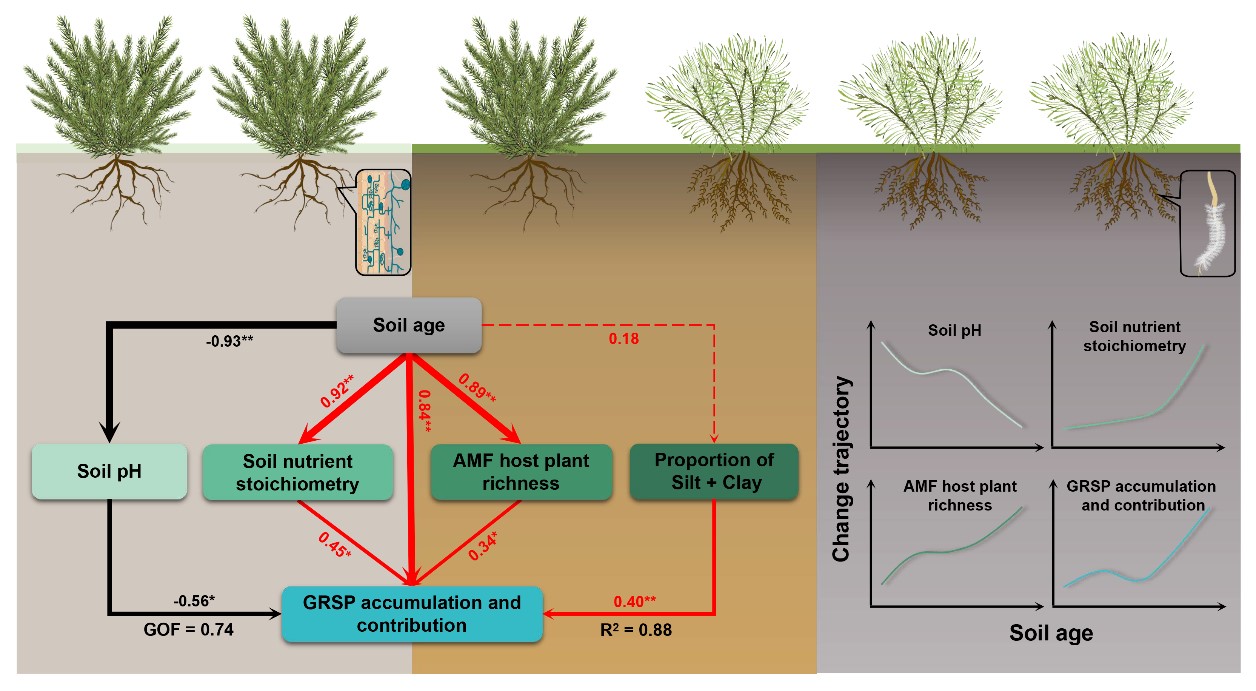
Amidst the growing challenges of global climate change, gaining a deeper understanding of soil carbon sequestration mechanisms is essential for improving the carbon sink function and stability of terrestrial ecosystems. Dissolved organic matter (DOM) and glomalin-related soil protein (GRSP) are vital components of the soil carbon pool, playing critical roles in the accumulation and stabilization of organic carbon. However, the distribution patterns, dynamic characteristics, and regulatory mechanisms affecting these components during long-term ecosystem development remain poorly understood.
To address this issue, researchers from the South China Botanical Garden of the Chinese Academy of Sciences, selected two coastal dune chronosequences spanning two million years—Jurien Bay, characterized by a hot, arid climate, and Warren, which features a wet, cold climate. Their aim was to systematically analyze how climate and pedogenesis influence the characteristics of DOM and GRSP, and their subsequent impact on soil organic carbon dynamics.
Using fluorescence excitation-emission matrix (EEM) spectroscopy combined with parallel factor analysis (PARAFAC), the researchers discovered that the levels of DOM accumulation and its humification index in the wet, cold climate of Warren were significantly higher than in the hot, arid region of Jurien Bay, indicating greater stability of organic matter. This difference primarily arises from variations in vegetation input, carbon supply, and the soil environment.
Further analysis revealed that during the early stages of ecosystem development, DOM concentrations were higher and rich in protein-like and microbially-derived components, serving as a vital nutrient source for plants and microorganisms. In contrast, during the degradation stage, DOM gradually transitioned to more stable components such as humic and fulvic acids, moving from promoting nutrient turnover to enhancing carbon pool stability.
The study identified that GRSP, particularly EE-GRSP, accumulates significantly in ancient phosphorus-deficient soils, despite a decline in arbuscular mycorrhizal fungi (AMF) biomass. This "counterintuitive accumulation" occurs because plants increase belowground carbon allocation, which stimulates AMF biomass turnover, a process co-regulated by soil acidity, nutrient stoichiometry, and the diversity of mycorrhizal plants. The research confirmed that GRSP plays a significant role in promoting the accumulation and stabilization of soil organic carbon (SOC), helping to maintain its critical carbon sink function, even under long-term nutrient limitations.
This study is the first to reveal the differential mechanisms by which climate and pedogenesis regulate the accumulation of DOM and GRSP, as well as their functions as carbon sinks. It provides new theoretical insights into the spatiotemporal evolution of soil carbon accumulation and stabilization in the context of global change.
The findings have been published in international soil science journals Catena and Plant and Soil. The study was supported by the National Key R&D Program of China, the National Natural Science Foundation of China, and the Guangdong Provincial Science and Technology Plan.

Schematic diagram of the study area. (Imaged by MOU et al)

Evolution of dissolved organic matter across dune ecosystem development. (Imaged by MOU et al)

Accumulation characteristics of glomalin-related soil protein and its influencing factors. (Imaged by MOU et al)

86-10-68597521 (day)
86-10-68597289 (night)

52 Sanlihe Rd., Xicheng District,
Beijing, China (100864)

